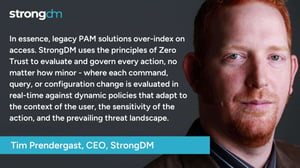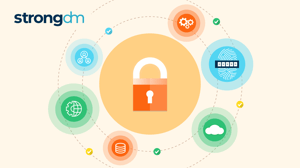
- Role-based, attribute-based, & just-in-time access to infrastructure
- Connect any person or service to any infrastructure, anywhere
- Logging like you've never seen

Reality doesn’t always match expectations. The Netflix baking show “Nailed It!” makes that clear: contestants will attempt to replicate a beautifully decorated unicorn cake, only to create a baking fail. And Zero Trust looks easy enough, but the reality for many companies is that it falls flat.
It shouldn’t be this way. The recipe for Zero Trust is just seven ingredients: people/identity, infrastructure, credentials, authentication, authorization, networking, and auditing. Where it goes wrong is when web-based workloads are converged into an identity provider.
Before you know it, “Just use Okta!” is the answer to every access question – even when data scientists, engineers, and other technical staff need access to other infrastructure. And the Oracle databases and Kubernetes clusters don’t care if you’ve dropped a cookie in your browser.
As a result, users who need that access to do their jobs report access-related interruptions and long wait times for access. In turn, they share credentials and set up backdoor workarounds – the exact opposite of zero trust.
The data scientists and engineers need more than authentication standards to access infrastructure. They need a product that speaks Oracle directly and can handle Kubernetes and SSHPs in a unified, automated, auditable workflow. There’s a way to do this so you can nail it, not fail, with your access.
In our latest webinar, “Nailed It! Zero Trust Access Edition,” learn how StrongDM has simplified the zero trust recipe. Watch the full replay here, then sign up for a no-b.s. demo.
About the Author
Justin McCarthy, Co-founder / CTO, originally developed empathy for Operations as a founding and pager-carrying member of many operations and data teams. As an Executive, he has led Engineering and Product in high-throughput and high-stakes e-Commerce, financial, and AI products. Justin is the original author of strongDM's core protocol-aware proxy technology. To contact Justin, visit him on Twitter.

You May Also Like




